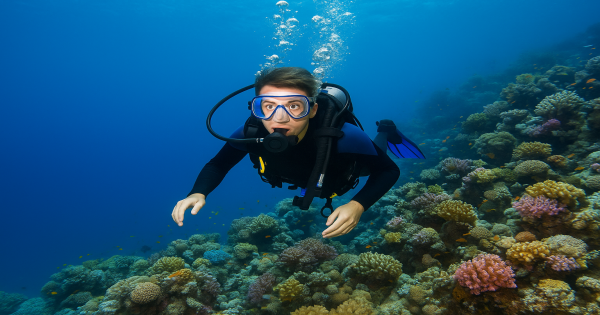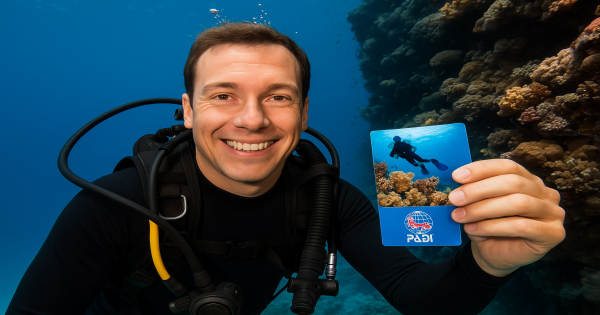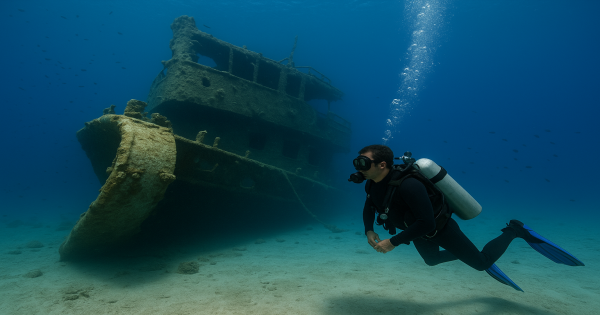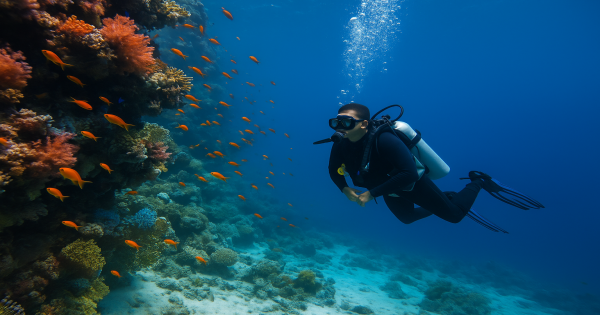Blog Details
Buoyancy Control
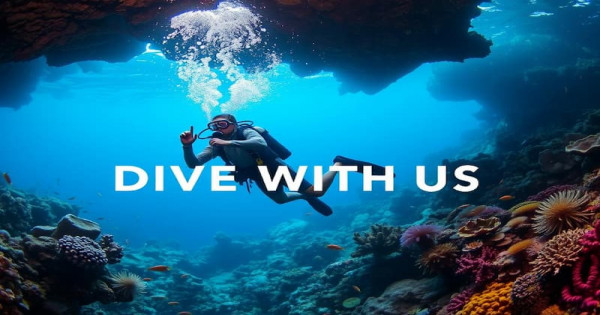
Mastering buoyancy control is key for safe scuba diving. It lets divers move underwater easily and safely. It's all about practice, patience, and the right techniques.
Improving your buoyancy control makes diving better and safer. Good diving skills, like buoyancy control device, are crucial. With the right skills, diving becomes more fun and safe.
Introduction to Buoyancy Control
This article will share the top 15 tips for better buoyancy control. You'll learn the skills to improve your diving and make it more enjoyable. Whether you're new or experienced, mastering buoyancy control is vital.
Key Takeaways
- Mastering buoyancy control is essential for scuba diving safety and comfort
- Effective diving techniques, including buoyancy control, reduce the risk of accidents
- Improving buoyancy control enhances the overall scuba diving experience
- Practice and patience are necessary for achieving good buoyancy control
- Proper diving techniques and equipment are vital for effective buoyancy control
- Conserving energy through buoyancy control allows for a more comfortable dive
Understanding the Basics of Buoyancy Control
Buoyancy control is key in scuba diving. It helps with underwater navigation and dive safety. To get good at it, you need to know how it works. Buoyancy is the force that pushes an object up when it's in water.
In scuba diving, controlling buoyancy is crucial. It keeps you steady underwater without sinking or floating away. This is important for staying safe and moving smoothly.
There are three main states of buoyancy: positive, negative, and neutral buoyancy. Neutral buoyancy is the best, where your weight matches the water's. This makes diving easier and safer.
What is Buoyancy?
Buoyancy depends on several things like your weight, your gear, and the water's density. To reach neutral buoyancy, you need to balance these factors.
The Three States of Buoyancy
The three main states are:
- Positive buoyancy: You're lighter than the water and float up.
- Negative buoyancy: You're heavier and sink down.
- Neutral buoyancy: You're just right, staying steady.
Why Proper Buoyancy Matters
Good buoyancy control is vital for underwater navigation and dive safety. It saves energy, prevents accidents, and makes diving more enjoyable. Learning to control buoyancy improves your diving skills and experience.
Neutral buoyancy is the key to a safe and enjoyable diving experience. By understanding the basics of buoyancy control, divers can navigate through the water with ease and confidence.
Glide effortlessly underwater with expert buoyancy control training in our SSI Diving Courses. Improve your balance, conserve air, and dive with precision +201092856966
Essential Equipment for Optimal Buoyancy
Having the right dive gear is key for controlling buoyancy. A buoyancy compensator (BC) is crucial for staying stable underwater. You also need a wetsuit or dry suit, a mask, and fins. Quality diving equipment improves your diving, helping you focus on buoyancy.
Some important pieces to think about are:
- A well-fitting buoyancy compensator for stability
- A reliable wetsuit or dry suit for warmth and comfort
- A clear mask for a good view
- A pair of fins for better water movement
Choose your dive gear based on your diving type and conditions. For cold water, a dry suit is a good choice. The right diving equipment ensures a safe and fun dive.
Getting the right gear is just the start. Practice and training are also key to becoming a skilled diver.
Mastering Your Breathing Techniques
Proper breathing is key for staying neutral buoyancy while diving. It saves energy, cuts down air use, and keeps you safe underwater. Learning good breathing techniques is a must for diving techniques.
Try diaphragmatic breathing to boost your dive safety. This method uses your diaphragm for better air exchange. Here are some exercises to get you started:
- Do deep, slow breaths, letting your belly expand, not your chest.
- Do breath-holding exercises to grow your lung capacity.
- Steer clear of bad breathing habits like holding your breath or breathing too fast, which can mess up your neutral buoyancy.
Getting good at breathing takes time and effort. Add these exercises to your diving techniques practice. This way, you'll keep neutral buoyancy and have a safe, fun dive.
Proper Weighting: The Foundation of Good Buoyancy
Proper weighting is key for good buoyancy control in diving. The right amount of weight helps divers stay stable underwater. Too much weight makes you sink, and too little makes you float.
Diving equipment plays a big role in achieving the right buoyancy. Divers need to figure out how much weight they need. This depends on their body weight, how deep they dive, and the equipment they use.
Getting the weighting right improves diving skills. It makes diving safer and more enjoyable. Proper weighting helps divers stay in control and enjoy the underwater world.
- Calculating weight requirements based on body weight and diving depth
- Adjusting diving equipment to achieve optimal buoyancy control
- Practicing diving skills to develop muscle memory and improve control
By following these tips and using the right gear, divers can become more confident. They'll enjoy a safer and more fun diving experience.
Master buoyancy, dive smoother, and explore with confidence +201092856966
BCD Management Skills
Managing a buoyancy compensator (BCD) is key for good buoyancy control. A BCD is vital dive gear for staying stable underwater. To use your BCD well, learn how to maintain it.
A well-kept BCD is crucial for diving. Here are some tips for BCD management:
- Regularly check your BCD for wear and damage
- Follow the maker's maintenance and repair guide
- Practice using your BCD in a safe place to improve skills
By following these tips, your diving gear will always be ready. This ensures your safety and fun underwater, whether in a reef or lake.
Understanding Your BCD
Knowing how your BCD works is essential. Take time to read the manual and learn about its features and settings.
Fine-Tuning BCD Controls
Adjusting your BCD controls can improve buoyancy. Try different settings to find what works best for you.
Maintenance Tips
Regular care extends your BCD's life. Always rinse it with fresh water after diving and keep it dry.
Body Position and Trim
Maintaining a stable body position is key for diving. It helps with underwater navigation and safety. A horizontal body position reduces drag, making diving easier.
Proper trim is also vital for buoyancy control. Trim means balancing in the water. Adjusting gear or using a trim weight helps achieve balance. This makes diving more stable and energy-saving.
Here are some tips for a stable body position and trim:
- Maintain a relaxed, horizontal body position.
- Adjust trim for a balanced water position.
- Use finning and breathing to save energy and stay stable.
By following these tips, divers can enhance their underwater skills and safety. A stable body and proper trim are crucial for a safe dive
Mastering body position and trim boosts diving skills. It makes diving more efficient and safe. Whether you're new or experienced, practicing these techniques improves your diving.
Advanced Buoyancy Control Techniques
To improve your diving, learning advanced buoyancy control is key. It's about using your gear to control your buoyancy perfectly. With effort and patience, you'll dive better and move underwater smoothly.
Focus on hovering skills to stay still underwater. Also, try fin pivot exercises for better movement control. And, practice the Buddha position for perfect buoyancy, neither sinking nor floating.
Hovering Skills
Hovering needs good breathing and gear management. Adjust your BCD and breathe slowly to feel weightless in the water.
Fin Pivot Exercise
This exercise makes you pivot around a point with your fins. It boosts your spatial awareness and diving skills.
Buddha Position Practice
The Buddha position is sitting on the seafloor with legs crossed and arms relaxed. It relaxes you, saves air, and extends your dive.
Mastering these techniques will boost your diving skills and experience. Always use the right gear and dive safely for a fun and safe dive.
Common Buoyancy Problems and Solutions
Divers often face the challenge of controlling their buoyancy. Issues like sinking or floating can be tough to solve. But, by knowing the causes and using the right solutions, divers can stay safe and enjoy their dives more.
Using the buoyancy compensator wrong is a common problem. This device helps keep divers at the right buoyancy level. To fix this, divers should make sure they're weighted right and adjust their buoyancy compensator when needed.
Here are some common buoyancy problems and how to solve them:
- Incorrect weighting: Check and adjust your weight belt as needed to achieve neutral buoyancy.
- Improper breathing techniques: Practice diaphragmatic breathing to help maintain a stable depth and prevent buoyancy issues.
- Equipment malfunctions: Regularly inspect and maintain your buoyancy compensator to ensure it's functioning properly.
By knowing these common problems and how to avoid them, divers can stay safe and dive better. Always aim for neutral buoyancy and adjust your buoyancy compensator as needed for a safe and enjoyable dive.
Environmental Factors Affecting Buoyancy
Divers must think about many things when they're underwater. Depth, temperature, and whether the water is salt or fresh are key. Knowing how these things affect buoyancy helps divers stay safe and get better at diving.
Some important things to remember include:
- Depth changes: Going deeper means more water pressure, which changes buoyancy. This is vital for safe underwater travel.
- Temperature effects: Cold water is denser than warm water. This affects buoyancy and is important for safety.
- Salt vs fresh water: Salt water is denser than fresh water. Divers need to adjust their techniques to stay safe.
By understanding these factors and adjusting their diving, divers can improve their safety and skill. This makes diving more enjoyable and safe.
Mastering buoyancy is crucial for all divers. Knowing how the environment affects it is key for safe diving. By learning about these factors and adjusting their diving, divers can become more confident and skilled.
Safety Considerations During Buoyancy Practice
When practicing buoyancy control, safety is key. Know your surroundings, dive with a buddy, and use the right gear. Also, have safety checks and emergency plans ready for a safe dive.
To keep neutral buoyancy, control your buoyancy well. Learn breathing techniques, adjust BCD controls, and keep your body steady. This way, you avoid accidents and enjoy your dive.
Some important safety tips for buoyancy practice are:
- Always dive with a buddy
- Use proper equipment and maintain it regularly
- Conduct regular safety checks and emergency procedures
- Maintain a stable body position and control your buoyancy
By following these tips and mastering buoyancy control, you can have a safe and fun dive. Remember, dive safety is everyone's job. Together, we can reduce the risk of accidents and injuries.
Training Programs at DIVE WITH US
DIVE WITH US has a variety of training programs. They help divers get better at diving skills and learn how to control their buoyancy. The center is great for all levels, from newbies to experts.
These programs cover many topics. You'll learn about diving equipment and how to move underwater. Taking a course will make you more confident in your diving abilities.
Specialized Buoyancy Courses
- Basic buoyancy control techniques
- Advanced buoyancy control methods
- Specialized courses for deep diving and wreck diving
Expert Instructors
The instructors at DIVE WITH US are very experienced and certified. They love teaching and sharing their knowledge of diving skills and buoyancy control.
Course Schedule and Pricing
The course schedule and prices at DIVE WITH US are flexible and affordable. They offer options for every budget and schedule.
Conclusion: Taking Your Diving to the Next Level
As we conclude our deep dive into buoyancy control, it's clear this skill is crucial for diving enthusiasts. Mastering these techniques will not only improve your dive safety but also make your dives more exciting.
Whether you're just starting out or have been diving for years, DIVE WITH US is here to help. Our buoyancy control courses, taught by experts, will boost your skills. You'll dive with more confidence and style.
Start your journey of learning and enjoy diving like never before. Join DIVE WITH US to explore the underwater world fully. Together, we'll make diving experiences you'll always remember.
FAQ
What is buoyancy control in scuba diving?
Buoyancy control means staying steady underwater without sinking or floating away. It's key for safe and easy diving.
Why is proper buoyancy control important?
It keeps divers safe by saving energy and avoiding accidents. It also makes diving more fun and easy.
What equipment is essential for optimal buoyancy control?
You need a buoyancy compensator (BC) and a wetsuit or dry suit. A mask and fins are also crucial. Good gear helps control buoyancy better.
How can breathing techniques improve buoyancy control?
Breathing right is key. Diaphragmatic breathing is best for diving. It helps control your buoyancy and keeps you safe.
Why is proper weighting important for buoyancy control?
The right weight is essential. Too much makes you sink, too little makes you float. Adjust your gear to stay steady.
How can a diver manage their buoyancy compensator (BCD) effectively?
Knowing your BCD is vital. Adjust it right and keep it in good shape. This ensures you dive well.
What are some advanced buoyancy control techniques?
Techniques like hovering and fin pivot exercises improve your skills. They take practice but enhance your diving.
What are some common buoyancy problems and how can they be solved?
Problems like sinking or floating are common. Regular maintenance and proper weighting help. Good breathing techniques also prevent these issues.
How do environmental factors affect buoyancy control?
Depth, temperature, and water type all affect buoyancy. Knowing these impacts helps you dive better in different conditions.
What safety considerations should be taken during buoyancy practice?
Safety is crucial. Practice in a safe place with a buddy and the right gear. Always be ready for emergencies.
